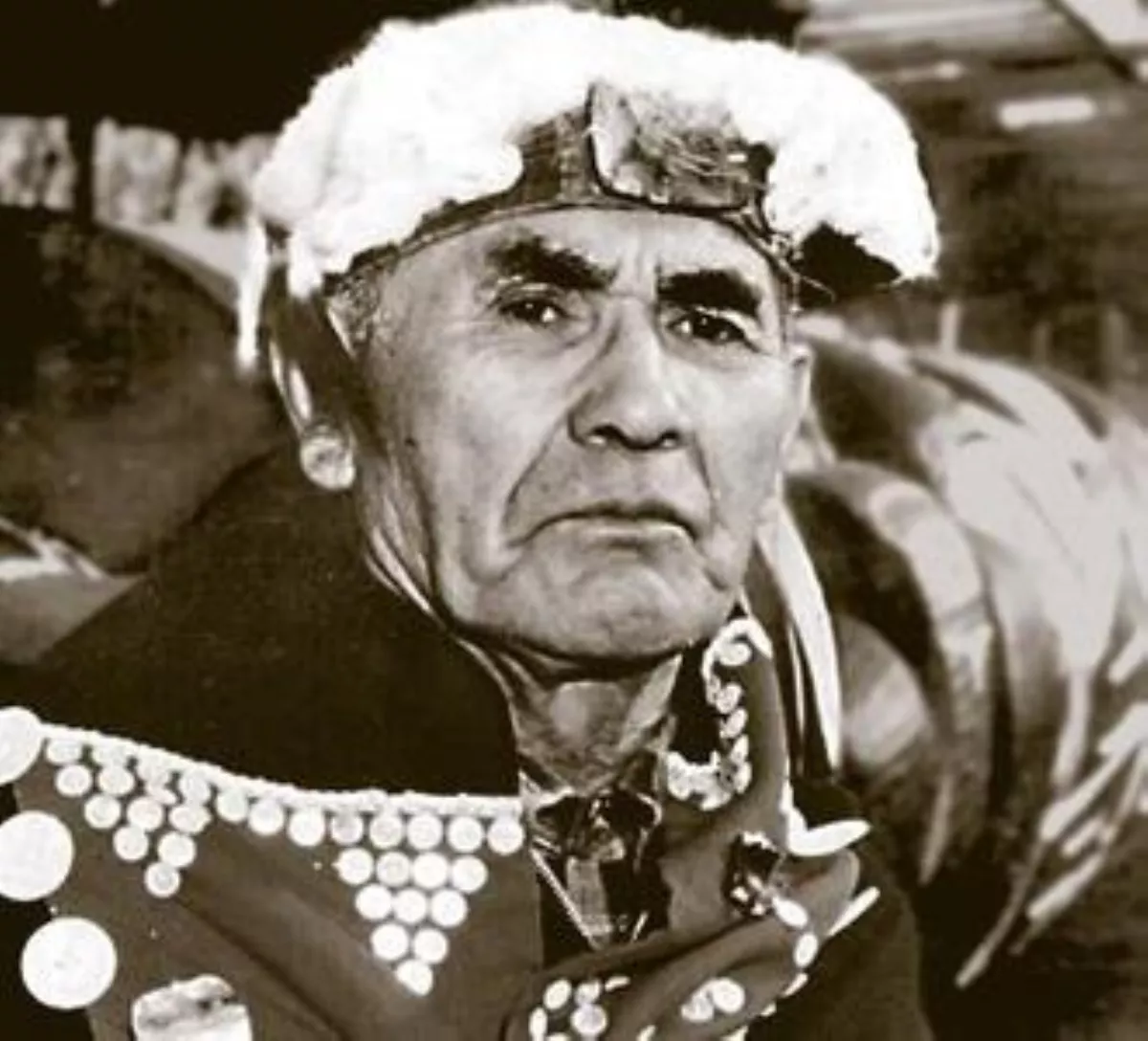 1.
1. Mungo Martin was a major contributor to Kwakwaka'wakw art, especially in the realm of wood sculpture and painting.

 1.
1. Mungo Martin was a major contributor to Kwakwaka'wakw art, especially in the realm of wood sculpture and painting.
Mungo Martin was the son of Yaxnukwelas, a high-ranking native from Gilford Island.
Mungo Martin's mother was Q'omiga, known by her English name, Sarah Finlay, who was the mixed-race daughter of a Kwakwaka'wakw woman and a Scottish man working with the Hudson's Bay Company.
Mungo Martin's father died when he was in his teen years.
Mungo Martin's mother married Yakuglas, known in English as Charlie James.
Mungo Martin's mother wanted her son to become a woodcarver and song maker, and held rituals to ensure this future.
Mungo Martin was raised in the potlatch tradition practiced by the Kwakwaka'wakw, and all aspects of their culture.
Mungo Martin was a promoter of the culture in his later years, convening with other noted artists, such as Tom Omhid, Willie Seaweed and Dan Cranmer, in order to prepare novices for Kwakwaka'wakw ceremonies.
Mungo Martin provided Ida Halpern, a Canadian ethnomusicologist, with 124 songs to help preserve his traditions for new generations.
Mungo Martin became a commercial fisherman at one point to support himself financially.
All his life Mungo Martin made songs, sang them and recorded them with the Hawthornes and others.
Mungo Martin had an interest in music in general and in folksong.
Mungo Martin learned and sang songs from other tribes, such as the Navajo, which he learned from his relative Bob Harris.
Mungo Martin learned Japanese folk songs from other Kwakwaka'wakw who had sailed to Japan on sealing vessels.
Mungo Martin developed as one of the first traditional artists to adopt many types of Northwest Coast sculptural and painting styles.
Mungo Martin restored and repaired many carvings and sculptures, totem poles, masks, and various other ceremonial objects.
Mungo Martin gained fame for holding the first public potlatch since the governmental potlatch ban of 1885.
Mungo Martin was awarded with a medal by the Canadian Council.
In 1947, Mungo Martin was hired by the Museum of Anthropology at UBC for restoration and replica work.
Later, Mungo Martin was hired in 1952 by the Royal British Columbia Museum in Victoria, British Columbia, to create works of Northwest Coastal Art as display pieces and examples.
Mungo Martin constructed Wawadit'la, a Kwakwaka'wakw "big house", at Thunderbird Park in front of the museum.
Mungo Martin was the designer and principal carver of the famous Totem Pole in Windsor Great Park in the United Kingdom.
When Mungo Martin went to work for the museum in Victoria, his son David and his family, and relatives Henry and Helen Hunt and their family joined him in living in James Bay near Thunderbird Park and the focus of the work to be done.
Mungo Martin trained his son David in his craft but David died in 1959.
Doug Cranmer, who became an artist of some considerable note, a unique approach to his craft added to his knowledge of things traditional placing him permanently on a level of talent Mungo would be proud of, spent time with his old relative too; Doug was the grandson of Martin's wife Abaya'a, and was the son of Martin's first cousin, and so brother, Dan Cranmer.
Mungo Martin was a mentor to the artist Godfrey Stephens, whom he first met in Victoria in the 1950s.
Mungo Martin continued to work on his carvings in his later years.
Mungo Martin was significant in the Northwest Coastal Art scene for his vast amount of work and actual sculpting.
Mungo Martin died on August 16,1962, at the age eighty-three in Victoria and was taken on a Canadian Navy ship to be buried in Alert Bay.